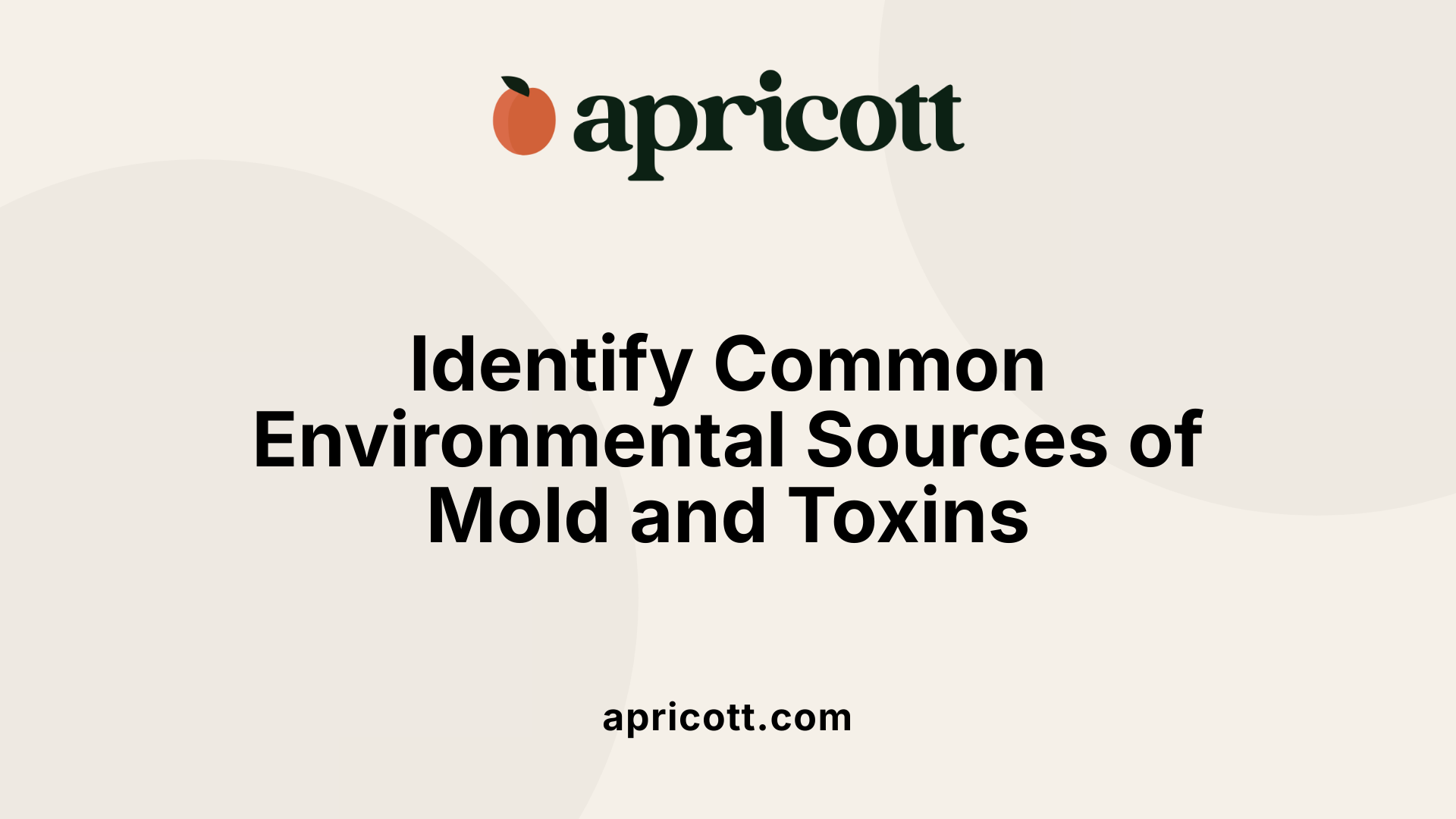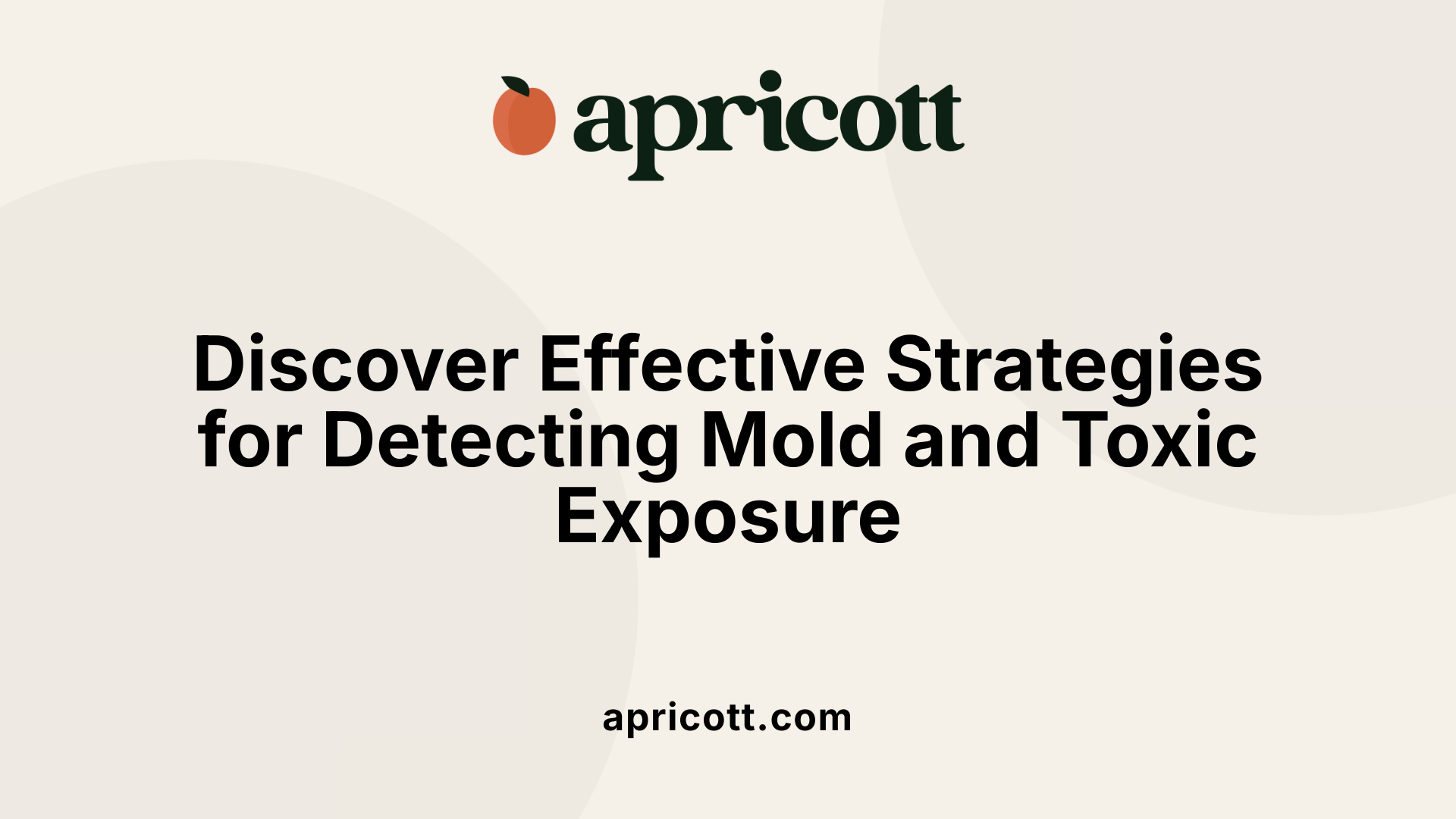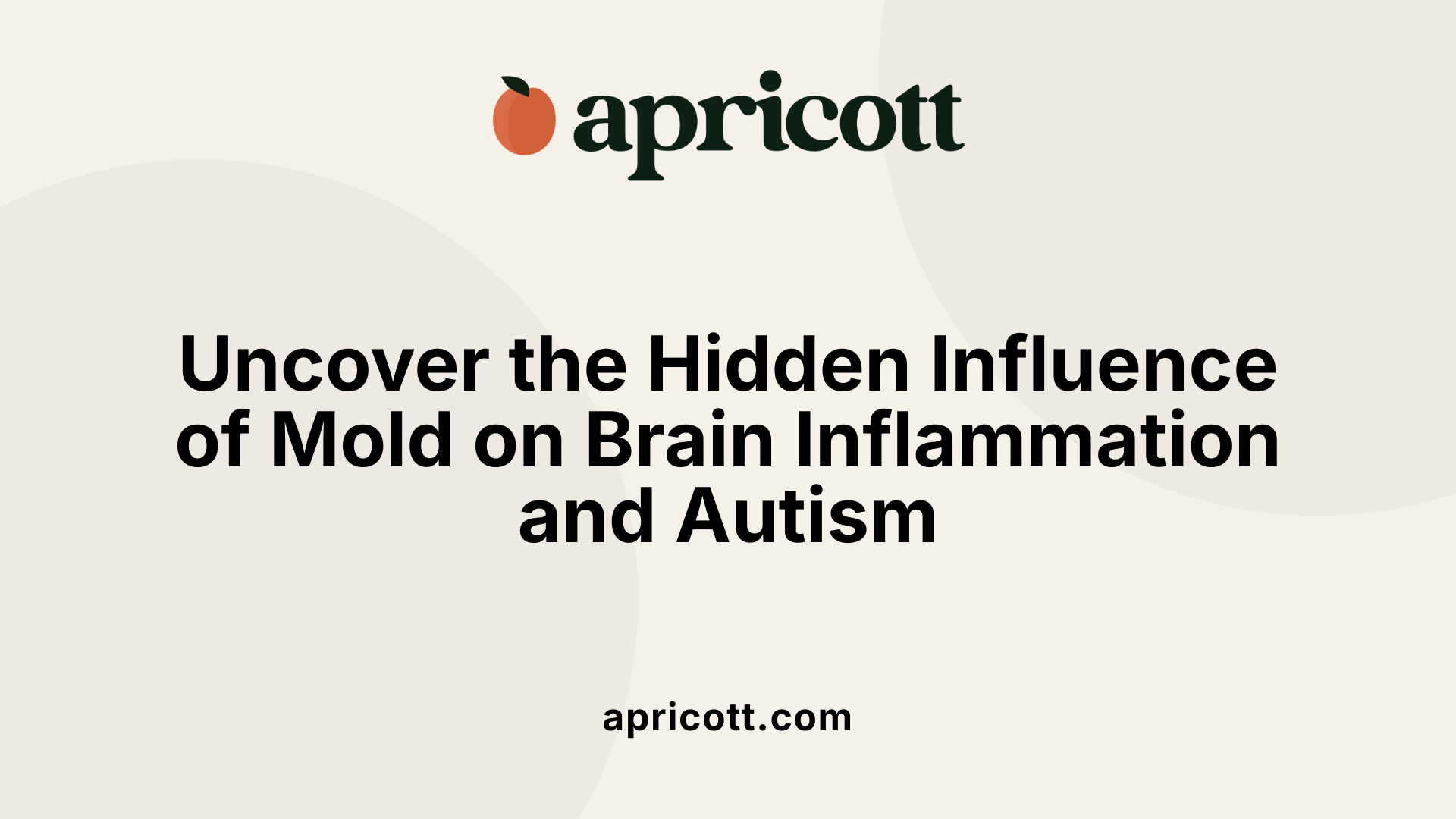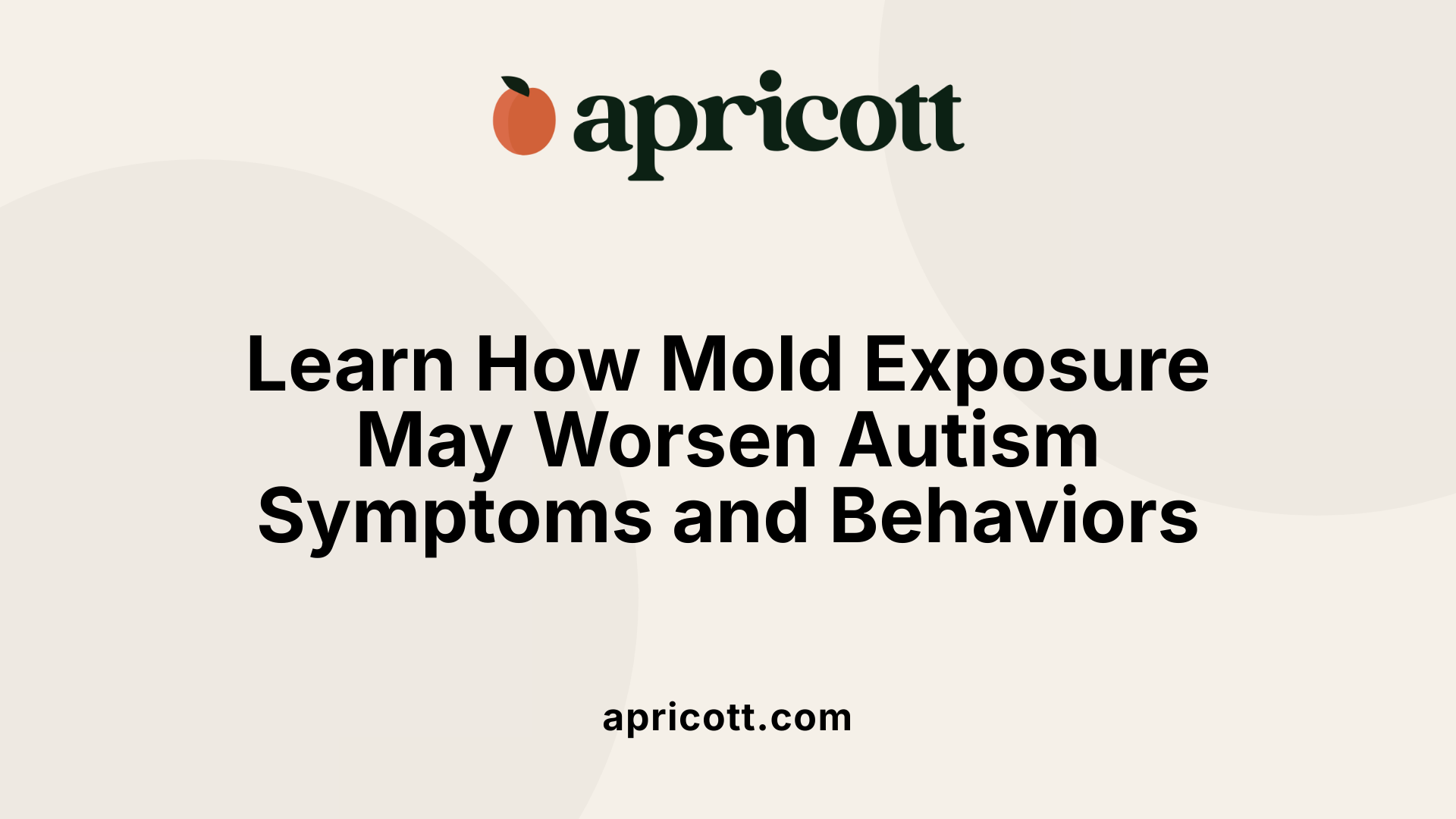Understanding Mold and Its Potential Impact on Autism
Recent scientific exploration into environmental factors influencing autism spectrum disorder (ASD) has highlighted mold and its toxic byproducts, mycotoxins, as possible contributors. This article investigates the current evidence linking mold exposure to neurodevelopmental issues, focusing on how mold and mycotoxins may influence autism symptoms, brain health, and neuroinflammation.
Sources of Mold and Toxic Exposure in Our Environment

What are common environmental sources of mold and toxins that could affect individuals with autism?
Many everyday environments contain sources of mold and toxins that may influence autism symptoms. Household mold growth is one of the most prevalent sources, especially in damp spaces such as basements, bathrooms, or areas with water leaks. Mold thrives in these moist conditions, producing spores and mycotoxins that can become airborne or settle on surfaces.
In addition to visible mold, colonization can occur inside the body itself, affecting the lungs, sinuses, and gut. These internal mold colonies can produce mycotoxins that interfere with immune function and neurological health.
Mycotoxins are also present in contaminated food and water supplies. Molds such as Stachybotrys (commonly called black mold), Aspergillus, Penicillium, and Fusarium release toxic compounds that can contaminate indoor air and consumables. Consuming or inhaling these contaminants may exacerbate neurodevelopmental and immune challenges typically associated with autism.
Environmental presence of mold species varies, but their commonality makes exposure nearly unavoidable, especially in poorly ventilated or water-damaged structures. Testing options include professional air sampling, dust analysis, and tape tests. When mold is detected, remediation by certified professionals ensures safe removal and prevents further spread. It is also essential to consider other environmental toxins like heavy metals — arsenic, mercury, and aluminum — which may contribute to health issues in susceptible individuals.
Reducing interaction with water-damaged zones, choosing food and water free from contamination, and improving indoor air quality through effective filtration can all help lower exposure. Taking these steps can be part of a broader strategy to support health and behavioral well-being in children with autism.
Methods for Detecting and Diagnosing Mold Exposure in Autism
 Detecting mold exposure in individuals with autism requires comprehensive approaches that include both environmental and biological assessments. Environmentally, testing for mold spores and mycotoxins in the home or clinical setting is crucial. These tests analyze air and surface samples for mold presence, helping to identify sources of moisture and mold growth.
Detecting mold exposure in individuals with autism requires comprehensive approaches that include both environmental and biological assessments. Environmentally, testing for mold spores and mycotoxins in the home or clinical setting is crucial. These tests analyze air and surface samples for mold presence, helping to identify sources of moisture and mold growth.
Biological testing, particularly urine analysis for mycotoxin metabolites, has become increasingly accessible. At-home test kits are available that can analyze urine samples to detect levels of mycotoxins, toxins produced by molds like Stachybotrys, Aspergillus, Penicillium, and Fusarium. Interpreting these results can be complex, but they offer an indication of individual exposure.
Clinicians also perform assessments of neurodevelopmental symptoms that could be linked to mold toxicity. Emerging research suggests early exposure to mold mycotoxins may influence neurodevelopment, potentially exacerbating autism symptoms.
In addition, the concept of mold toxicity syndrome—characterized by immune dysfunction and neurological symptoms—has gained attention as a diagnostic consideration.
Altogether, diagnosing mold-related influences involves a combination of environmental testing, biological assessments like urine tests, and clinical neurobehavioral evaluations. These methods are part of an evolving field aiming to better understand and manage mold's impact on neurodevelopment.
The Impact of Mold and Mycotoxins on Brain Health and Neuroinflammation

How do mold toxins trigger neuroinflammatory processes?
Exposure to mold and its toxins can activate the body's immune response in the brain, leading to neuroinflammation. These toxins, known as mycotoxins, are produced by molds like Stachybotrys chartarum, Aspergillus, Penicillium, and Fusarium. When inhaled or ingested, mycotoxins can cross the blood-brain barrier, setting off immune signaling pathways that result in inflammation of neural tissue.
Effects on neural cells and the process of neurogenesis
Mycotoxins can directly harm brain cells and disrupt neurogenesis, the process by which new neurons are formed. Damage to neural cells in regions such as the hippocampus may impair memory and learning abilities. This neural damage can contribute to behavioral issues often seen in autism, such as communication difficulties and social challenges.
Role of pro-inflammatory cytokines like IL-1β
A critical component of mold-induced neuroinflammation is the elevation of pro-inflammatory cytokines, including interleukin-1β (IL-1β). These cytokines promote inflammatory responses within the brain, leading to further neural damage. Elevated IL-1β levels are linked with impairments in cognitive functions and mood regulation, worsening symptoms in individuals with autism.
How does oxidative stress relate to neuronal damage?
Mycotoxin exposure also induces oxidative stress, which damages cells through the creation of free radicals. This oxidative condition can cause lipid peroxidation and neuronal injury, further exacerbating neuroinflammation. The cumulative effect of ongoing oxidative stress and cytokine activity can lead to neurodegeneration and behavioral changes.
| Aspect | Effect | Consequences |
|---|---|---|
| Neuroinflammation | Activation of immune responses in the brain | Memory deficits, mood disturbances |
| Neural cell damage | Loss of neuronal integrity | Cognitive decline, behavioral issues |
| Cytokine activity | Increased IL-1β and other cytokines | Exacerbation of neuroinflammatory pathways |
| Oxidative stress | Free radical formation | Lipid peroxidation, neuronal death |
Research indicates that reducing mold and mycotoxin exposure through environmental controls or treatment may help alleviate neuroinflammatory responses. This approach has the potential to improve behavior, cognition, and overall response to therapy in children with autism, highlighting the importance of addressing environmental factors in neurodevelopmental health.
Mold’s Influence on Autism Symptoms and Behavior

How might mold exposure influence autism symptoms and behaviors?
Mold exposure and the mycotoxins they produce can potentially influence autism symptoms by affecting brain health through neuroinflammation, immune activation, and neurotoxic effects. Mycotoxins are toxic compounds produced by molds such as Stachybotrys chartarum, Aspergillus, Penicillium, and Fusarium. When inhaled or ingested, these substances can trigger a cascade of adverse reactions.
Children with autism often show impaired detoxification pathways, making them more vulnerable to the harmful impacts of mycotoxins. This increased vulnerability can lead to a worsening of neurological, behavioral, and immune-related symptoms associated with ASD.
Research indicates that exposure to mold toxins may cause neurotoxic effects, which impair cognitive functions and exacerbate behavioral challenges. The toxins can stimulate immune responses that release cytokines—small proteins involved in cell signaling. Excess cytokine release can promote neuroinflammation, further impacting brain function.
This ongoing immune stress and neuroinflammation can worsen existing autism behaviors, such as social difficulties, repetitive actions, and communication issues. Evidence from recent studies points to a biological link between mold-related toxins and the development or worsening of ASD behaviors. While more research is needed to firmly establish causality, current data suggest that reducing mold and mycotoxin exposure might improve behavioral symptoms, cognitive function, and response to therapy in children with autism.
Efforts such as addressing moisture issues in the environment, using HEPA air filters, and professional mold remediation are practical steps to limit exposure. Additionally, some treatments involve using mycotoxin binders like activated charcoal and bentonite clay to help detoxify the body. By minimizing exposure, it’s possible to support better neurological and immune health, potentially alleviating some challenges faced by children with autism.
Current Scientific Perspectives and the Path Forward

What is the current scientific understanding of the potential link between mold (mycotoxins) and autism?
Research into the relationship between mold exposure and autism spectrum disorder (ASD) is ongoing, with emerging evidence suggesting a possible connection. Studies have identified molds such as Aspergillus and others like Stachybotrys, Penicillium, and Fusarium as sources of mycotoxins—harmful compounds produced by these fungi.
Recent reviews and research papers have highlighted that mycotoxins can contribute to neurological symptoms and immune system disruptions. For children with autism, these effects may worsen existing symptoms or interfere with therapy progress.
Some case studies reveal promising results, showing marked behavioral improvements after eliminating mold exposure or reducing mycotoxin levels. For example, children treated with antifungal therapies and targeted mold remediation have shown reductions in urine mycotoxin metabolites and behavioral gains.
Children with autism often have compromised detoxification processes, making them more vulnerable to the toxic effects of these compounds. The neurotoxins can impact brain development and function, highlighting the importance of assessing the environment for mold and mycotoxins.
While current findings support the idea that mold and mycotoxins could influence autism symptoms, definitive proof of causality remains under investigation. Large-scale, controlled studies are needed to clarify how mold exposure interacts with neurodevelopment and to develop effective prevention and treatment strategies.
More Information
To explore further, you can search for scientific research on mold and autism using queries like "scientific research on mold and autism," which can lead to studies examining environmental factors affecting neurodevelopmental conditions.
Mitigating Risks and Moving Forward
While the link between mold exposure and autism is still under active investigation, current evidence underscores the importance of environmental awareness. Ensuring proper mold remediation, conducting thorough testing for mold and mycotoxins, and supporting immune and neurological health through tailored interventions may help reduce potential risks. Continued research is essential to clarify causality and develop effective prevention and treatment strategies, offering hope for improved outcomes for individuals with autism impacted by environmental toxins.
References
- Understanding the Link Between Mold, Mycotoxins, and ...
- Rapid Complete Recovery From An Autism Spectrum ...
- No Association between Mycotoxin Exposure and Autism
- Mold and Mycotoxins - The Autism Community ...
- Mycotoxin Exposure and Autism: A Systematic Review ...
- Effects of Mycotoxins on Neuropsychiatric Symptoms and ...
- Effects of Mycotoxins on Neuropsychiatric Symptoms and ...
- Mycotoxin Exposure and Autism: A Systematic Review ...
.svg)
.svg)








